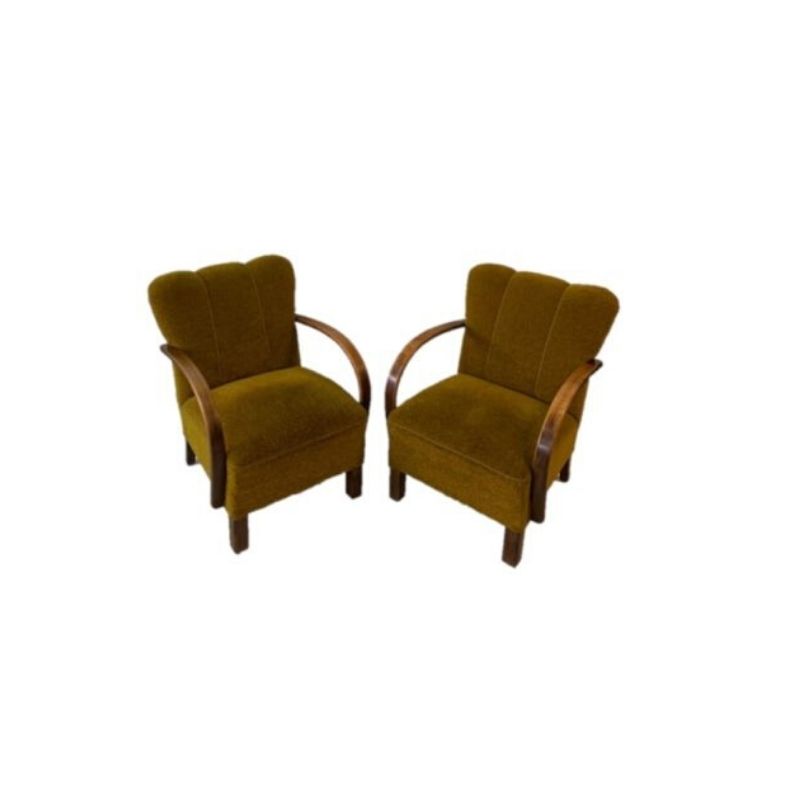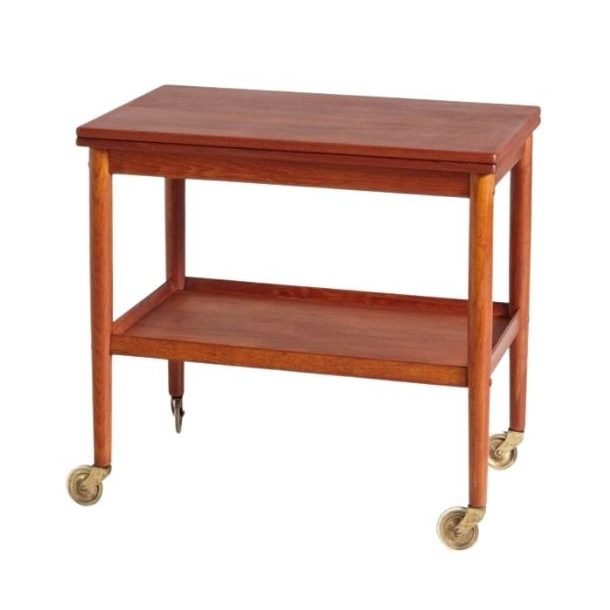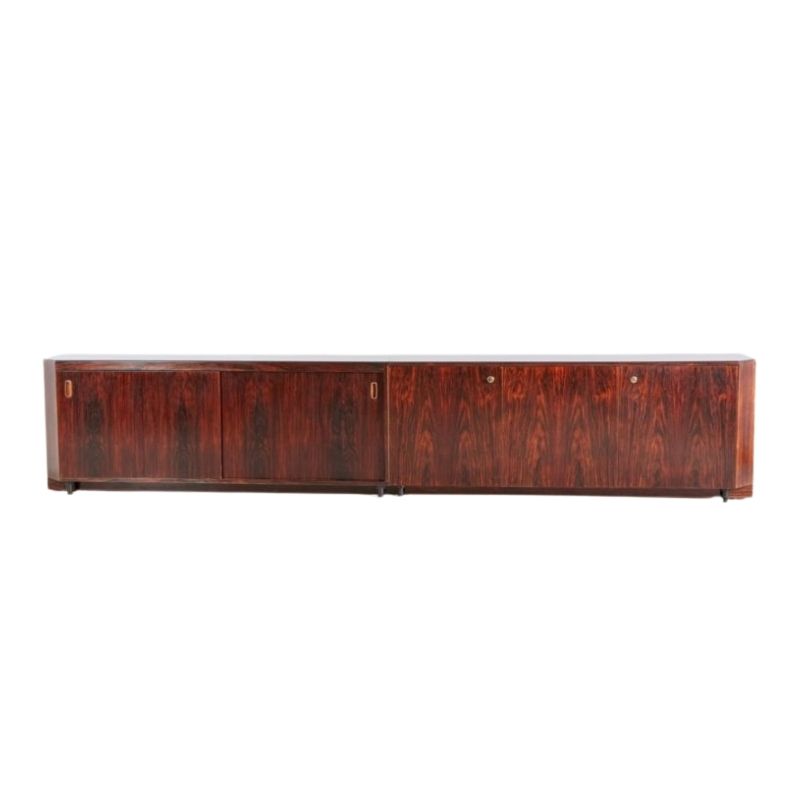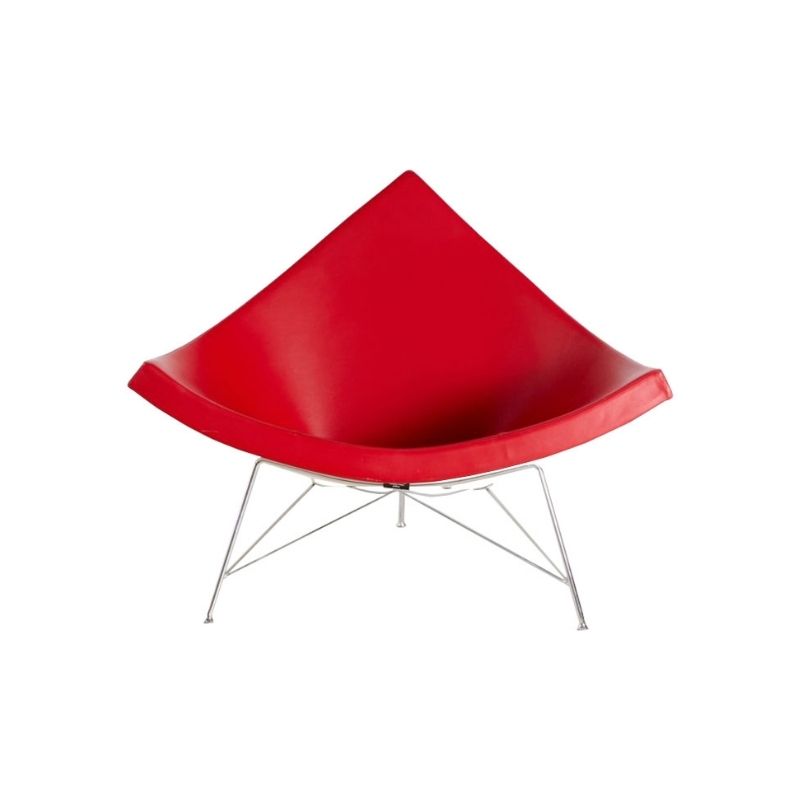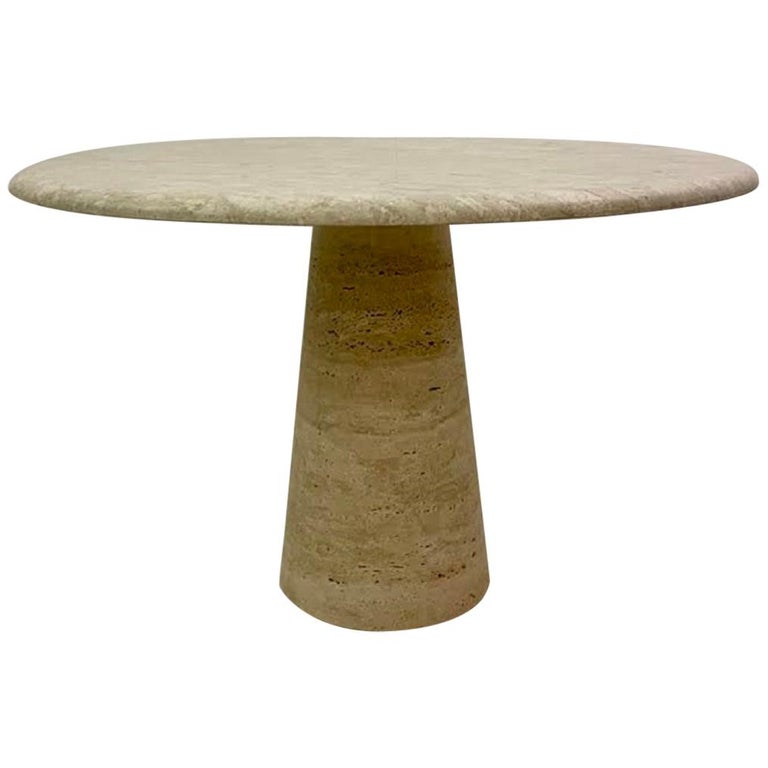we allways see the best of what designers produce, never the failures but I think its interesting to look at the train wrecks.
Heres one, usually I like Meiers work, Especially the range of furniture that this came from, but something went horribly wrong here.
Any other examples?
Every designer had a stinker or two
The Kangaroo Chair of George Nelson comes to mind. It was pretty unattractive. Also, the Flying Duck chair was kind of goofy too.
One could argue that the current available Eames Sofa Compact is kinda ugly...and I've been told it's also rather uncomfortable.
What?
"One could argue that the current available Eames Sofa Compact is kinda ugly...and I've been told it's also rather uncomfortable."
How is the current production Sofa compact different than the vintage other than they added a third cross member in the middle? It's very handsome, and one of the most comfortable sofas I have owned. It does not have arms, and it's not a huge "lounge around watching movies all day" kinda' sofa, but it is very well designed from an ergonomic perspective. The seat pitch and the high back make it very comfortable.
I think it is also great looking. Light, airy, and slim, yet a well made piece with surprising heft when you see it in person. We only sold our sofa compact when we acquired the much more rare Eames 3473 sofa which could be considered a more clumsy looking 1970s version of the sofa compact.
Likewise the Kangaroo chair. I think it's very attractive, and at the top of my personal "most wanted" list. I think it was not a commercial success because it was too similar to the womb chair which had already become an instant classic.
Posse
A posse going to be after me on this, but I'm nominating the Eames shell chairs...just the shell itself To me they're most uncomfortable and not the prettiest things. Curves, wonderful flow...great! As a materials and production design...great! Could have roots from my early childhood, slipping and sliding off them.
Can hear and feel the murmurs (if not outright shrieks)of dissenting sentiments already.
Finn Juhl 'Pelican' chair -...
Finn Juhl 'Pelican' chair - I just don't like it, looks ungainly although potentially comfortable (never sat in one)
Although I'm rather speaking personally here and in danger of wading away from the subject! I guess an opinion of 'bad' design though is personal isn't it?
I nominate
any modern design piece that was designed solely for its look, not its usuability.
Some things like Roger Tallon's "Chair" from 1965 and Gunnar Aagaard Andersen 1964 dripped chair are kinda stupid.
Art (paintings and sculpture) doesn't have to do anything. You either like its look or not.
Furniture and architecture also has be comfortable and usable. If it's not, then I have no time for it.
Is the JOE sofa comfortable?
A pompous
and self-satisfied British (sorry) art critic whose name escapes me, declared on TV that Rietveld's Red/Blue Chair is frightfully uncomfortable -- as if the point of that icon was its ergonomic performance !
On the other hand, the Eames fiberglas shell WAS intended to be comfortable. As I have stated before, it is a one-trick pony: instant comfort, but no "second posture." That is, there isn't another way to sit in it after the first ten minutes. Its initial posture is its only posture. This is a shortcoming, in my experience.
More thoughts
I think the subject is interesting and valid. I also think however, that substantive thought should be put into critiquing any art or design. A simple "I don't like it", or "it's slippery" does not make it an unsuccessful or the "not so great design" Heath proposed.
I think that someone who considers themselves interested in, or educated about art, architecture or design, should be able to separate their subjective likes and dislikes from a reasoned assessment of whether a piece is important historically, is innovative in terms of it use of materials or new forms, is functional and relevant in the context of its time and culture.
I hate when people espouse the attitude that art can be judged simply in the eye of the beholder. Not true. Again, something can appeal to your subjective likes and dislikes, your personal preferences, but that does not make it good art. Likewise, something that you find distasteful, unpleasant, or ugly, can still be good art. There is plenty of very important, very good art that I don't care for at all. But I recognize that it's my own SUBJECTIVE sensibilities that I'm responding to. I realize that the work is qualifiably "good" art and is very important in the history of art and culture. That if that work had not been created, that other subsequent work (that may or may not appeal to me personally) would not exist. It would not have reacted to, against, or otherwise built upon the ideas brought to the fore by the work that I may not "like".
The horrendous lack of arts education in this country have left people ill-equipped to evaluate, critique or even understand art much beyond "That's pretty. I like it" and has sadly left most people out of the discourse of contemporary fine art. The fact that contemporary art has been relegated to a discussion among a small minority of academics, practitioners (artists), gallerists, and collectors means it looses broader meaning, a greater audience, and more relevance to society as a whole. I think that is the reason that film has eclipsed the plastic arts in terms of societal import among all the means of visual expression. I think that people crave art in their lives, they want to be surrounded by things that stimulate them visually and intellectually, and I think that is why architecture and design have been gaining so much in popularity. The fact that you have a more tangible set of criteria to evaluate a piece makes it more accessible. Does it work? Can I sit in it? Is it comfortable? Does it fit in your hand well? Can I live in it? Live in it well? ...These are all rational, reasonable things one can expect from an object of design or a building and therefore can use to judge if a design is successful or not.
Sorry to rant, but it's a pet peeve of mine, and as I said I think that the subject of critiquing design is interesting, valid and bears discussion. I just think that criticism should be well considered and reasoned.
Also
I also think it's easier to find contemporary designs to dissect. Many of the vintage designs that everyone if familiar with have already cleared many hurdles. They have been recognized as being innovative for their time, employed new materials, found a manufacturer, and many have seen commercial success. Many have been so well received that they have never gone out of production (deemed undesirable, or unfashionable). There are a great many designs that are being produced today, many of which I understand and like, many that don't appeal to me. There are even some that I think are not very good design, that are novelty, and will not sustain themselves in the long run.
SDR, in my initial post, I did not intend to exclude design that functions as art. There are plenty of examples of objects that intentionally subvert their perceived purpose or function. Others where the aesthetic is so important and revolutionary that other concerns of function do not rate as highly. That does not make them unsuccessful.
Oh, and NickR60, I LOVE the pelican chair and I'd love to have one. That is one of those pieces that really just appeals to my aesthetic sensibilities. It's like a wonderful, playful sculpture you can sit in. Also, it's quite comfortable! I have sat in one. A reproduction, granted. There are less than a handful of known vintage examples and they would bring around 100K at auction, so I won't ever own a real vintage example. Granted, I realize the aesthetic is not everyones cup of tea.
In your carefully reasoned arguments don't forget...
In your carefully reasoned arguments don't forget we are talking about utilitarian objects to be used and hopefully enjoyed by many people. It's unlikely most chair buyers will have the time or the inclination to use such worthy criteria in their evaluation of a particular chair. They look, they sit, maybe they wiggle a bit. Then they add it all up and buy a chair. I think it's a disservice to design to dismiss the relevance of such appraisals. It's like the tree falling in the woods thing "is it a good chair if no one sits in it?"
Or is it not part of "good design" that ordinary people will like it and use it? I'm probably just old and uncool 😉
Ok
OK!
This is where I get shot down in flames...
I nominate :
I don't like the relationship between the seat and the base, or the way they join, I don't like the hole, or where it sits in relation to the base.. I have never understood why it is called a chaise..
I like the Pelican chair however..
so what do I know? 😉
If you need any help, please contact us at – info@designaddict.com




